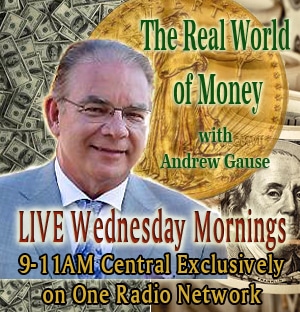The talk of a possible double dip is now common banter on TV investment
programs. And indeed, deflationary forces seem to have the stronger grip
right now than inflationary ones. So if deflation is the next reality
we have to face, what happens to our favorite stock investments?
There’s lots of data about what gold does during periods of high
inflation, but less so with deflation, partly because we don’t see a
true deflation all that often. But of course we’ve got the biggie we can
look at, and the seriousness of the Great Depression can give us a big
clue as to how gold stocks behave in a true deflationary environment.
First, we know what happened to the stock market in 1929, and in that
initial shock, gold stocks crashed too. A rally ensued in most equities
until the following April, including gold stocks. Then the Dow took a
one-way elevator ride down for the next two and a half years.
What did gold stocks do?
From 1929 until January 1933, the stock of Homestake Mining, the largest
gold producer in the U.S., rose 474%. Dome Mines, the largest Canadian
producer, advanced 558%. In spite of the gold price being fixed at the
time, gold stocks rose dramatically.
At the same time, the DJIA lost 73% of its value.
And the chart doesn’t show that you could have bought both stocks at
half their 1929 price five years earlier, which would have led to gains
of around 1,000%. That’s not all: both companies paid healthy and rising
dividends as the depression wore on; Homestake’s dividend went from $7
to $15 per share, and Dome’s from $1 to $1.80.
Yes, volatility was high in the gold stocks throughout the depression,
with occasional wild price swings. But after the 1929 crash, much of the
volatility was to the upside.
The bottom line is that the two largest gold producers – during a time
of soup lines and falling standards of living – handed investors five
and six times their money in four years.
What about gold itself? On April 5, 1933, President Roosevelt issued an
executive order forcing delivery (i.e., confiscation) of gold owned by
private citizens to the government in exchange for compensation at the
fixed price of $20.67/oz (you can read the original order here).
And less than nine months later, he raised the gold price to $35,
effectively diluting every dollar 41% overnight and swindling everyone
who had turned in his gold.
We don’t know exactly what an untethered gold price would have done
during the depression, but given its distinction in history as a store
of value, we believe it would retain its purchasing power in a
deflationary setting regardless of its nominal price. In other words, while the price of gold might not rise, or could even fall, your best protection is still gold.
But with all this said, the overriding concern isn’t deflation. Yes,
economic growth will likely be flat for years, and many Americans will
see some hard times ahead. But deflation won’t win; in a fiat money
system, any deflation will be met with an inflationary overreaction (as
we’ve seen). And the worse the deflation, the more extreme the
overreaction will be.
In fact, I think there’s another round of money printing before this
year is over. And sooner or later, that extra money is going to dilute
every dollar you own, giving us an inflationary hit as bad as the
deflationary one we got during the Great Depression.
It’s for this reason that I continue to urge you to own physical gold,
in your possession and under your control, given its reliability as a
store of value in both inflationary and deflationary environments. If
you don’t have a meaningful portion of your investments in physical
gold, I think you’re playing with fire. And those who play with fire
eventually get burnt.
Want an easy way to start buying physical gold? I arranged for some seriously discounted bullion in the current issue of Casey’s Gold & Resource Report, which you can check out risk-free here…



'If Deflation Wins, What Will Gold Stocks Do?' has no comments
Be the first to comment this post!